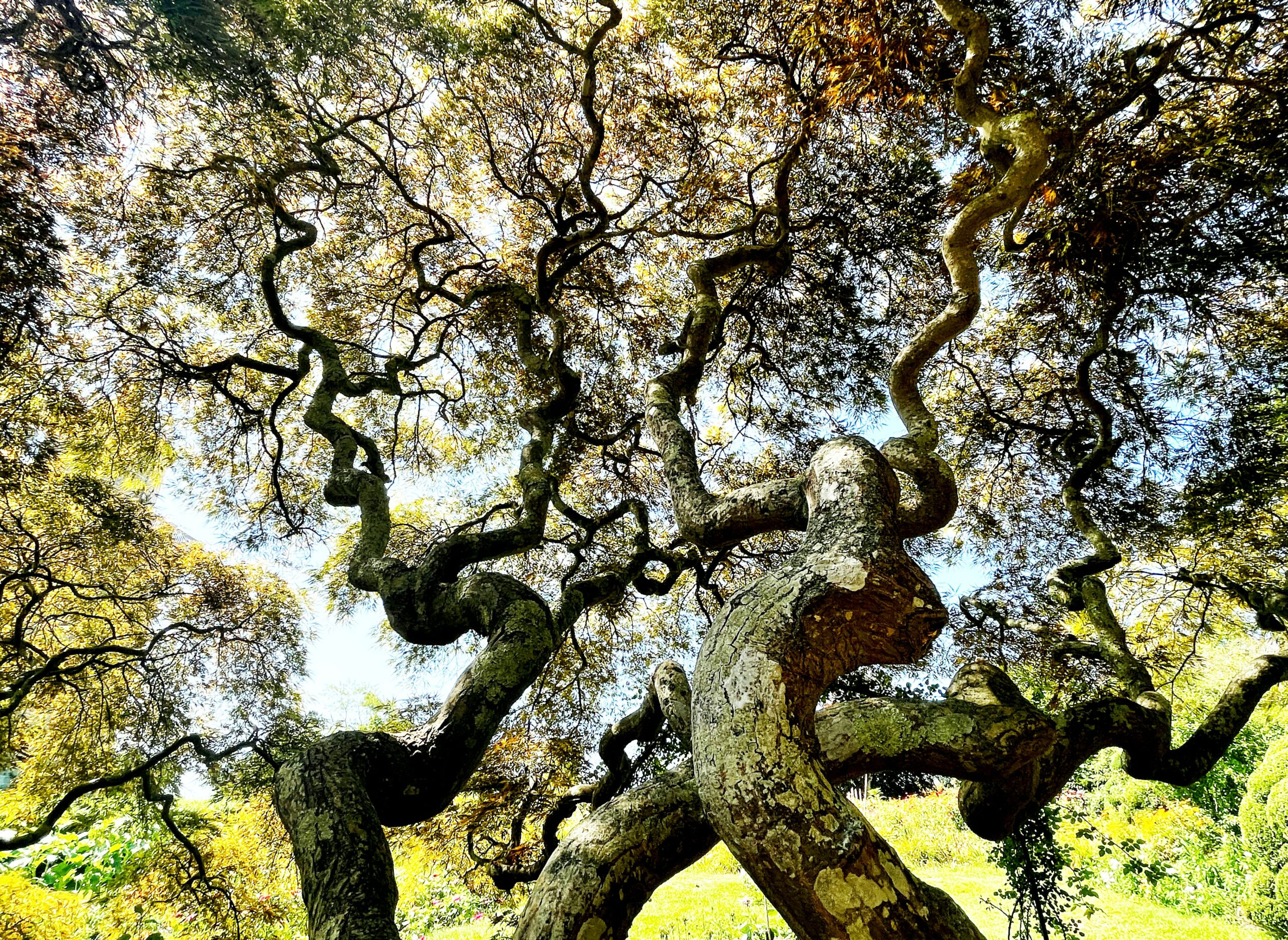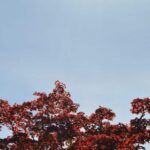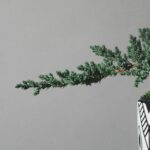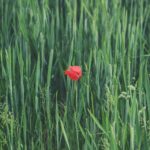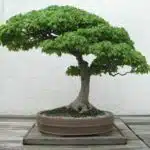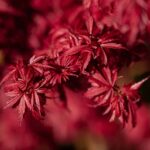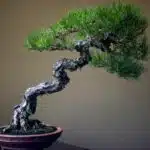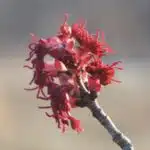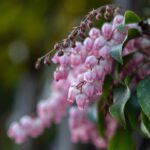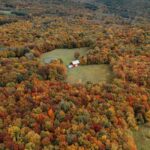Growing Japanese Maple bonsai is a captivating art form that will capture the heart of any gardening enthusiast. Like painting a masterpiece, it requires skill and patience to cultivate this beautiful tree in miniature form. With the right care and guidance, anyone can nurture their own miniature Japanese Maple bonsai into full bloom.
The mesmerizing beauty of the Japanese Maple’s cascading branches and vibrant leaves paints a picture of tranquility, making it the perfect addition to any home or garden. But caring for these delicate trees requires special attention, as they are susceptible to pests and diseases if not properly looked after.
With knowledge of proper care techniques and an understanding of what makes these trees so unique, you can easily grow your own stunning Japanese Maple bonsai in no time at all. Read on to find out how to grow and care for your very own Japanese Maple bonsai!
Selecting The Japanese Maple Species
Selecting the right Japanese Maple species is like a treasure hunt. It’s an exciting adventure, but one that requires patience and knowledge in order to find the perfect bonsai. With over 200 varieties of this versatile tree, it can be difficult to narrow down the selection. As a specialist in botany and gardening, I understand how important it is to select the best variety for your garden.
When choosing a Japanese maple bonsai, consider its leaf shape, bark texture, size, and overall color. Every variety has different characteristics that make them unique and visually appealing. Many varieties are either red or green leafed, and there are even some which have both colors at once! Additionally, some varieties such as Kiyohime or Shishigashira have stunningly vibrant foliage while others such as Tamukeyama have beautiful dark-colored bark.
Each species also has its own growth habit which should be taken into account when shopping for your bonsai. Some Japanese maples can grow rather large in size while others remain small with only a few branches. There are even dwarf varieties that stay small even after years of growth which makes them ideal for those who have limited space in their garden or container gardens on their balcony or patio. Ultimately, the selection of the perfect Japanese Maple bonsai will depend on your personal preferences and what you want from your tree.
These considerations should help you decide which species to bring home; however, purchasing your tree is just as important as selecting it!
Purchasing Japanese Maple Bonsai
Selecting the perfect Japanese maple bonsai is essential for growing a healthy, vibrant tree. Stunningly-shaped leaves and intricate branches are hallmarks of Japanese maples, making them popular choices for bonsais. Purchasing a Japanese maple bonsai from a reputable nursery is the best way to ensure that you get exactly what you need for successful growth.
When shopping for a new bonsai, it’s important to consider the tree’s size, shape, and variety of species. Smaller trees are usually easier to maintain than larger ones; however, there are several dwarf varieties of Japanese maples that make excellent starter plants. Additionally, trees with a naturally round or cascading shape look especially attractive in containers and can be easily trained into more traditional styles like upright or slant. Finally, there are numerous different types of Japanese maple available on the market today, so it’s important to do some research before purchasing one to ensure you’re getting the right variety for your climate zone and needs.
Finding an experienced nursery or garden center with knowledgeable staff is key when looking for quality Japanese maple bonsais. Not only will they be able to answer any questions you have about care and maintenance but they’ll also be able to provide advice on selecting just the right variety for your situation. With proper care and attention, these beautiful trees can bring years of enjoyment in any garden or home setting.
Planting Japanese Maple Bonsai
Planting a Japanese maple bonsai is like planting a seed of potential. Its roots reaching deep into the soil, it takes the nourishment to build its trunk and branches. With careful attention, it will grow and blossom into becoming a magnificent bonsai. Here’s what you need to do:
- Obtain a quality soil mix that is appropriate for bonsai.
- Choose a pot that has good drainage and enough space for the roots to grow.
- Plant your Japanese maple carefully, making sure not to damage any of its delicate roots.
Gardening experts recommend that when planting your Japanese maple bonsai, you should ensure that the tree is placed at the same level in the pot as it was in its original container or burlap bag. The root ball should be firmly held in place by securing it with copper or plastic wire around the sides of the pot, making sure not to wrap it too tightly so as not to injure the tree’s fragile roots. After planting, water your bonsai thoroughly and make sure there are no air pockets in soil around its roots.
With proper care and attention, your Japanese maple bonsai will thrive and develop an aesthetically pleasing shape over time. Now that you’ve planted your tree, let’s move on to considering its ideal sunlight requirements for growth and development.
Sunlight Requirements For Japanese Maple Bonsai
Sunlight requirements are critical for successful cultivation of Japanese Maple Bonsai. These trees require at least six hours of direct sunlight per day, and preferably more if possible. It’s important to note that they will not thrive in hot climates, so it’s best to keep them in semi-shaded areas and out of direct sunlight during the hottest part of the day. Furthermore, Japanese Maple Bonsai need to be protected from strong winds and cold temperatures–ideally placed near a wall or other protective barrier.
To ensure adequate sunlight for your tree, you should consider the climate where it is being planted. If you’re growing your bonsai indoors, it’s important to place it close to a window that receives plenty of light throughout the day. Additionally, you may want to use a grow light or fluorescent lamp (especially during winter months) to provide additional light for your bonsai tree.
When caring for Japanese Maple Bonsai, providing adequate sunlight is essential for their health and growth. With proper placement and supplemental lighting, your tree will thrive in its new home! Next, let’s look at how to water a Japanese Maple Bonsai so it can stay healthy and beautiful.
How To Water Japanese Maple Bonsai
Have you ever been curious about how to care for a Japanese Maple Bonsai? Watering is one of the most important aspects of caring for any bonsai tree. So, let’s take a look at how to water your Japanese Maple Bonsai.
When it comes to watering bonsai trees, there are three key things to keep in mind: frequency, amount, and technique. To ensure your tree is properly hydrated and healthy, you’ll need to get all three right!
Firstly, determine the frequency of watering. This will depend on several factors such as seasonality and soil type. Generally speaking, during summer months you’ll need to water your tree more often than in winter months. During the summer months you should aim to water your tree every day or two; whereas in the winter months you can reduce this frequency down to once or twice per week. Secondly, decide on the amount of water needed for each session – usually around 1 liter per day – and thirdly, consider the technique you’ll use for watering – this could be anything from hand-watering with a watering can, using an irrigation system or even misting with a spray bottle if necessary.
By following these steps carefully, you can provide your Japanese Maple Bonsai with just enough water without overdoing it – something that’s essential for keeping your bonsai healthy and happy!
Fertilizing Japanese Maple Bonsai
Fertilizing Japanese Maple Bonsai is an integral part of its care regimen. Bonsai requires special fertilizers that are specifically designed for small-sized trees, like Japanese Maples. Additionally, the amount and frequency of fertilizer should be adjusted to the tree’s growth stage and season.
When applying fertilizer to a Bonsai, it’s important to always use a balanced combination of nitrogen, phosphorus, potassium and other minor nutrients. This will ensure healthy growth and prevent deficiencies in the tree’s nutrient uptake. Furthermore, it’s important to avoid over-fertilizing the bonsai as this can lead to root burn or other negative consequences.
To help with proper fertilization practices, one can use a soil test kit or simply observe the signs of nutrient deficiency in leaves or branches. If there are signs of under-fertilization, then one can increase their rate of application or switch to a more potent fertilizer blend. In any case, proper fertilization is essential for the well-being of your Japanese Maple bonsai tree!
With a thorough understanding of fertilization requirements, we now move on to repotting Japanese Maple bonsai – another important step in caring for your tree!
Repotting Japanese Maple Bonsai
Repotting a Japanese Maple Bonsai is an essential part of its care and health. Repotting should be done every two to three years, depending on the individual bonsai tree’s needs. It’s important to understand the process in order to properly repot your Japanese Maple Bonsai.
The first step to repotting a Japanese Maple Bonsai is to remove it from its old pot. This may require gently tapping the sides of the pot with a wooden stick or spatula in order to loosen up the soil and roots before attempting to remove the plant from its container. Once removed, it is important to gently untangle any rootbound roots and trim away any dead or damaged ones. This process helps ensure that your bonsai will have adequate space and nutrients for future growth.
When selecting a new pot for your bonsai, consider size, shape, material, and color. A larger pot may also be necessary if you are transplanting an older tree that has outgrown its current one. Be sure to use well-draining soil when filling the new pot with soil as this will help prevent root rot and other issues down the line. After repotting, water generously and provide proper light levels until your bonsai has become established in its new home.
Following these steps will ensure your Japanese Maple Bonsai stays healthy for many years of enjoyment! Pruning and trimming are also essential parts of caring for this type of bonsai tree; learning how to do this correctly will help maintain its aesthetic appeal while still allowing the plant enough room to grow properly.
Pruning And Trimming Japanese Maple Bonsai
Pruning and trimming Japanese maple bonsai is an important part of taking care of this beloved plant. With the right pruning techniques, you can create a beautiful bonsai that will last for years. Did you know that Japanese maple bonsai can live for decades with proper care?
The first step in pruning and trimming your Japanese maple bonsai is to remove any dead or diseased branches. This will help keep your tree healthy and prevent the spread of disease throughout the plant. Next, you’ll want to selectively prune new growth to encourage a fuller shape. Make sure to leave enough foliage on each branch so it can still receive adequate sunlight and nutrients.
When it comes to shaping your Japanese maple bonsai, you’ll want to use careful snipping with sharp scissors or shears. You can also use wires to guide small branches and create an aesthetically pleasing shape. However, be sure not to leave the wire on too long or it may damage the bark and cause scarring. As with all bonsais, regular maintenance is key for keeping your Japanese maple looking its best over time.
With proper pruning and trimming techniques, you can create a gorgeous Japanese Maple bonsai that will last for many years. Now, let’s look at various propagation methods used for growing these lovely trees from seed or cuttings!
Propagation Methods For Japanese Maple Bonsai
Propagating Japanese maple bonsai is like a puzzle – it’s tricky, but with the right pieces, it can be done! As an expert in botany and gardening, I’m here to guide you through this process.
First things first, there are three popular methods of propagation for Japanese maple bonsai: air layering, grafting, and seed growing. Air layering involves taking a branch from the tree and cutting it partially in order to encourage root growth. Grafting is when two pieces of wood are joined together with a special wax or tape so that they form into one plant. Finally, seed growing takes time but is relatively simple – just plant the seeds in moist soil and wait for them to sprout.
No matter which method you choose, there are some things that should remain consistent throughout the process: regular watering and fertilization (with liquid fertilizer), adequate sunlight exposure, proper pruning techniques, and pest prevention measures such as spraying insecticides or fungicides. Additionally, make sure to trim away any dead or diseased branches to ensure healthy growth.
When propagating Japanese maple bonsai plants, patience is key – success will not come overnight! With dedication and attention to detail though, you’re sure to end up with a beautiful tree in no time at all. To keep your plant healthy going forward, it’s important to pay close attention to pest prevention and control measures.
Pest Prevention And Control Measures
We’ve come to the tenth step in growing a successful Japanese Maple Bonsai – preventing and controlling pests. Now, this is an area where many gardeners get stuck in the past, relying on outdated methods such as spraying pesticides and insecticides. But fear not! There are now modern approaches to pest control that have proven effective for Japanese Maples. Let’s take a look at them with a time-traveling lens.
The most important thing is to maintain an ‘observation first’ attitude when it comes to pest prevention and control. This means regularly checking for signs of pests or diseases so you can act early if something does occur. If you do spot any pests, try using natural remedies like neem oil or diatomaceous earth before resorting to chemical solutions. For example, neem oil works by interrupting the life cycle of insects, while diatomaceous earth is a naturally occurring mineral that kills bugs by absorbing their waxy coating.
It’s also important to make sure your bonsai is kept healthy with regular fertilizing and pruning so it has better resistance against disease-causing organisms. Additionally, removing dead foliage and twigs from the soil can help reduce the number of pests present in your bonsai’s environment. With these steps taken care of, you’ll be well on your way to having a thriving Japanese Maple Bonsai free from pest problems! Now let’s move onto common diseases you should be aware of…
Common Diseases To Look Out For
When it comes to caring for your Japanese Maple bonsai, it’s important to be aware of any potential diseases that could affect its health and growth. Common diseases that can afflict Japanese Maple bonsai include anthracnose, root rot, and scale. Each of these can cause serious harm to your bonsai if not treated in a timely manner.
Anthracnose is a fungal disease that causes brown spots on the leaves of your Japanese maple bonsai. It will most likely appear during the springtime when temperatures are cooler and moisture levels are higher. If you detect anthracnose early on, it can be treated with antifungal sprays or by removing infected leaves from the tree.
Root rot is another common disease that can affect your Japanese Maple bonsai. It is caused by overwatering or poor drainage which leads to waterlogged soil around the roots. This prevents them from getting enough oxygen which ultimately causes them to rot away. Signs of root rot include yellowing or wilting leaves as well as a foul smell coming from the soil around the roots. To prevent root rot, ensure that you provide appropriate drainage and only water when necessary.
Scale can also attack your Japanese Maple bonsai if left untreated. This pest sucks sap from the tree’s leaves and stems which weakens the plant and stunts its growth over time. Scale infestations should be addressed immediately with insecticidal soap or oil sprays in order to stop further damage from occurring on your tree.
By being aware of these common diseases, you can take steps to help keep your Japanese Maple bonsai healthy and thriving for years to come! With proper knowledge and care, you will be able to create a beautiful specimen of bonsai artistry in no time at all! Moving ahead now into design principles for Japanese Maple Bonsai, let us discuss how best to shape this lovely tree into something truly special…
Design Principles For Japanese Maple Bonsai
Designing Japanese Maple Bonsai trees requires a few important considerations. The shape of the tree is paramount, as it determines how much of its beauty can be appreciated. Other factors to consider are the size and type of pot you select, as well as the soil mix you use. All these elements must be in harmony in order to create a stunning bonsai masterpiece.
When thinking about the design of your bonsai, think about how a natural tree might look in nature. Consider what shapes and branches would naturally occur, then select appropriate pruning techniques to achieve that shape or form. Pay attention to all parts of the tree; foliage, trunk, and roots should all have their own unique characteristics that when combined together create a stunning piece of art.
Choose a pot that reflects your style and complements your bonsai’s design. Glazed pots offer more protection for your bonsai than unglazed pots do; however, both styles can enhance the overall presentation with their own unique aesthetic qualities. Additionally, make sure you pick the right soil mix for your tree so it has adequate drainage and enough nutrients to thrive. With these tips in mind, you’ll be well on your way to creating an amazing Japanese Maple Bonsai!
Indoor Care For Japanese Maple Bonsai
When it comes to the care of Japanese maple bonsai, it’s important to remember that they’re an outdoor species, and need additional attention when brought indoors. In these instances, you should create an environment suitable for a Japanese maple bonsai in order to ensure its long-term health.
Firstly, it’s essential to provide your bonsai with adequate light. Aim for 8-10 hours of direct sunlight each day or, alternatively, use fluorescent lighting in order to simulate natural light levels. Secondly, make sure to maintain a consistent temperature around 55-65°F in order to prevent shock during extreme weather conditions. Lastly, water your bonsai regularly so that the soil remains moist but not soggy; this is critical as dry soil can cause the roots of your plant to die off quickly.
In addition, make sure that you monitor the humidity levels in your home; ideally these should be between 40-50%. If necessary, use a humidifier or pebble tray filled with water and stones near your bonsai tree for added humidity. With proper indoor care and maintenance, you can ensure that your Japanese maple bonsai stays healthy throughout its life. By following these simple steps and keeping an eye on your plant’s needs throughout the year, you’ll be able to enjoy a beautiful specimen of Japanese Maple Bonsai for many years to come.
Overwintering Japanese Maple Bonsai
The Japanese Maple Bonsai tree is a symbol of peace and tranquility, with its lush green leaves gently rustling in the wind. This miniature tree can have a powerful impact on one’s home or garden. But to keep it thriving, proper care must be taken during the winter months. That’s why overwintering your Japanese Maple Bonsai should not be taken lightly.
As a botanist and gardener, I highly recommend that you assess your location before choosing which method of overwintering your bonsai is best for you and your tree. Depending on where you live, there are several methods you can use to protect your bonsai from severe cold, including bringing it indoors, wrapping it in burlap or putting it in an unheated greenhouse. If you live in a mild climate, however, some protection may not be necessary at all.
Whatever method you choose to protect your bonsai from the cold weather of winter, make sure that you keep an eye out for signs of stress on the tree that could indicate too much cold or not enough light. These signs may include wilting leaves or discoloration. With attentive care and protection during winter, your Japanese Maple Bonsai will continue to grow and thrive for years to come!
Enjoying Your Japanese Maple Bonsai
Once you have grown and cared for your Japanese maple bonsai, it is time to enjoy the fruits of your labor. The beauty and serenity of a Japanese maple bonsai is something that should be appreciated. Here are some tips to help maximize your enjoyment of this unique specimen:
First, take some time to appreciate the aesthetics of the tree. Notice the shape of the trunk and branches, as well as the color and texture of the leaves. Appreciate the intricacies of its structure and how each part works together in magnificence.
Second, reflect on how much care has gone into nurturing this bonsai over time. Think about all of the work that was done to create such a spirit-filled specimen—from selecting a healthy seedling to wiring and pruning techniques used to shape it into a thing of beauty.
Finally, share your experience with others. Tell friends and family about all that you have learned through this process, or even host a viewing party so that everyone can take in its stunning form. You may even consider entering it into competitions or exhibitions to show off your hard work! Allowing others to appreciate what you have created will give you an immense sense of pride in all that you have accomplished with your Japanese maple bonsai tree.
Frequently Asked Questions
What Are The Best Growing Conditions For Japanese Maple Bonsai?
Cultivating a Japanese maple bonsai is an art form, requiring patience and dedication. Like a conductor carefully conducting their orchestra, the grower must pay careful attention to their prized specimen in order to help them reach their full potential. To ensure that your Japanese maple bonsai blooms like a symphony of colors and textures, understanding the best growing conditions for this species is essential.
When it comes to light and temperature, Japanese maple bonsai prefer bright indirect light and temperatures between 60 – 77 degrees Fahrenheit. They can also tolerate temperatures down to 40 degrees Fahrenheit, but should never be exposed to temperatures above 85 degrees Fahrenheit for extended periods of time. When the weather is colder than 40 degrees Fahrenheit, keep the tree indoors or use a protective covering such as burlap or plastic wrap around it.
In terms of soil, Japanese maple bonsai prefer acidic soils with plenty of organic matter added. This helps promote better drainage while still retaining enough moisture for optimal growth. However, avoid overwatering as this can lead to root rot and damage the tree’s roots irreparably. Make sure you water early in the day so that any excess moisture has time to evaporate before nightfall arrives.
With these guidelines in mind, your Japanese maple bonsai will thrive with proper care and attention! By providing the right environment for your precious tree, you’ll have something beautiful and unique that you can show off with pride!
How Do I Know When To Fertilize My Japanese Maple Bonsai?
Japanese maple bonsai is a beautiful addition to any garden or home. With their delicate foliage and vibrant colors, these plants are a perfect way to bring life into a space. But with proper care and attention, they can thrive for decades as a part of your family’s landscape. One important step in caring for Japanese maple bonsai is knowing when and how to fertilize them correctly.
Fertilizing is key to healthy growth, especially during the spring and summer months when the tree has more energy to devote to growth. However, over-fertilizing can be just as harmful as under-fertilizing and can cause serious damage to the plant. According to research, an optimal fertilizer rate for Japanese maple bonsai should be around 2 ounces per plant per year. This amount should be applied in two separate applications; one in late winter or early spring and another in mid-summer after the tree has had time to recover from its previous pruning session.
When it comes time to actually fertilize your Japanese maple bonsai, there are some things you should keep in mind. First, use a balanced fertilizer formulated specifically for bonsais that contains both nitrogen, phosphorus, and potassium (NPK). Secondly, make sure you mix the fertilizer at half strength before applying it directly onto the soil or root system of the tree so that it won’t burn the roots or leave too much of an excess on the soil surface. Finally, water thoroughly after each application so that all nutrients are absorbed by the root system of your bonsai tree.
With regular fertilization and proper pruning techniques, your Japanese maple bonsai will stay healthy and look great for years to come! By following these simple tips you’ll be able to ensure that your plant stays looking good while also keeping it healthy enough to enjoy for many years down the road.
How Often Should I Repot My Japanese Maple Bonsai?
It is essential to repot your Japanese Maple Bonsai at the right time to ensure that it grows healthy and thrives well. Repotting gives the bonsai an opportunity to recover from its current state and start growing again with fresh soil, pruning and a new pot. So, how often should you repot your Japanese Maple Bonsai?
The answer really depends on the growth rate of your bonsai tree. Generally speaking, Japanese maples are slow-growing trees which means that they do not need to be repotted frequently. However, if you notice that the roots have filled up most of the pot or that your bonsai tree isn’t growing very well, then it’s time for a repotting session. In this case, it’s best to repot your bonsai every two or three years.
When you’re ready to repot your Japanese Maple Bonsai, make sure you use a quality soil mix specifically designed for bonsais. The soil should be light yet nutrient-rich with good drainage capabilities. Also, you’ll want to make sure that you don’t damage any of the roots when transferring your bonsai from its old pot into its new one. Lastly, after repotting the tree, give it some time before fertilizing so as not to overwhelm it with nutrients all at once.
Repotting your Japanese maple bonsai can help keep it healthy and encourage its further growth if done properly and at appropriate intervals. Doing so will ensure its long-term health and beauty for many years down the road.
Is It Possible To Propagate Japanese Maple Bonsai From Cuttings?
The Japanese maple bonsai is a captivating and low-maintenance beauty that can be kept in the home or outdoors. But, can it also be propagated from cuttings? It’s a question that many curious gardeners like you ask. The answer is yes! With the right knowledge of techniques and care, you can grow your very own Japanese maple bonsai from cuttings.
Propagating this iconic tree species is quite straightforward; however, there are certain conditions to follow to ensure success. Firstly, take cuttings in late summer or early autumn when the plant is growing vigorously. Then, select stems with several pairs of leaves – they should have a few sets of healthy buds at the base of each stem. After that, prepare your cutting: remove any excess foliage and dip into rooting hormone before placing them into the potting mix. Lastly, keep your new plants well-watered and shaded until they’ve developed strong roots and are ready for repotting into larger containers.
With patience and dedication, you can now enjoy your very own Japanese maple bonsai! The tree will reward you with its vibrant colors every season as it grows taller and fuller over time – providing both beauty and serenity to its surroundings. As long as you provide ample sunlight, warmth and water – along with regular pruning to maintain its desired shape – your newly propagated bonsai will thrive in no time!
Are Japanese Maple Bonsai Suitable For Indoor Growth?
Japanese Maple Bonsai is a popular choice for bonsai enthusiasts. They are known for their ornamental beauty and unique foliage, making them ideal for growing indoors. Interestingly, statistics show that over 75% of all Japanese Maple Bonsais are grown indoors. This is due to the fact that these plants do not require direct sunlight to thrive.
When caring for this type of bonsai, it’s important to keep in mind that Japanese Maples prefer slightly acidic soil and need regular waterings. It can also be beneficial to fertilize them once or twice per year with a balanced fertilizer. Additionally, pruning your bonsai regularly will help keep it healthy and looking its best. With the proper care, you can expect your Japanese Maple Bonsai to live for many years.
When it comes to indoor growing conditions, Japanese Maple Bonsais do best when they receive bright, indirect light and moderate temperatures. Avoid placing them near any sources of direct sunlight as this can damage their delicate leaves. Additionally, be sure to provide enough space around the plant so air can circulate freely and prevent fungal diseases. With the right amount of light and humidity levels maintained, you’ll find that your Japanese Maple Bonsai is well suited to indoor growth.
Conclusion
In conclusion, Japanese maple bonsai require a great deal of care and attention to ensure they reach their full potential. With the right growing conditions, regular fertilization, timely repotting and occasional propagation from cuttings, these plants can thrive both indoors and outdoors. A gardener who gives these bonsai the love and dedication they need will be rewarded with a beautiful display that is sure to turn heads.
For those just starting out on their bonsai journey, it’s best to start small and work your way up as you gain more experience. Remember, Rome wasn’t built in a day; so don’t expect overnight success when it comes to caring for your Japanese maple bonsai. Take it step-by-step, learning as you go along, and you’ll soon have a masterpiece on your hands!
Once you get into the swing of things with your Japanese maple bonsai care routine, you’ll find yourself ‘in seventh heaven’ with how well your plants are doing. This is when the real fun begins – experimenting with different techniques and shapes to really make them stand out amongst the rest!

